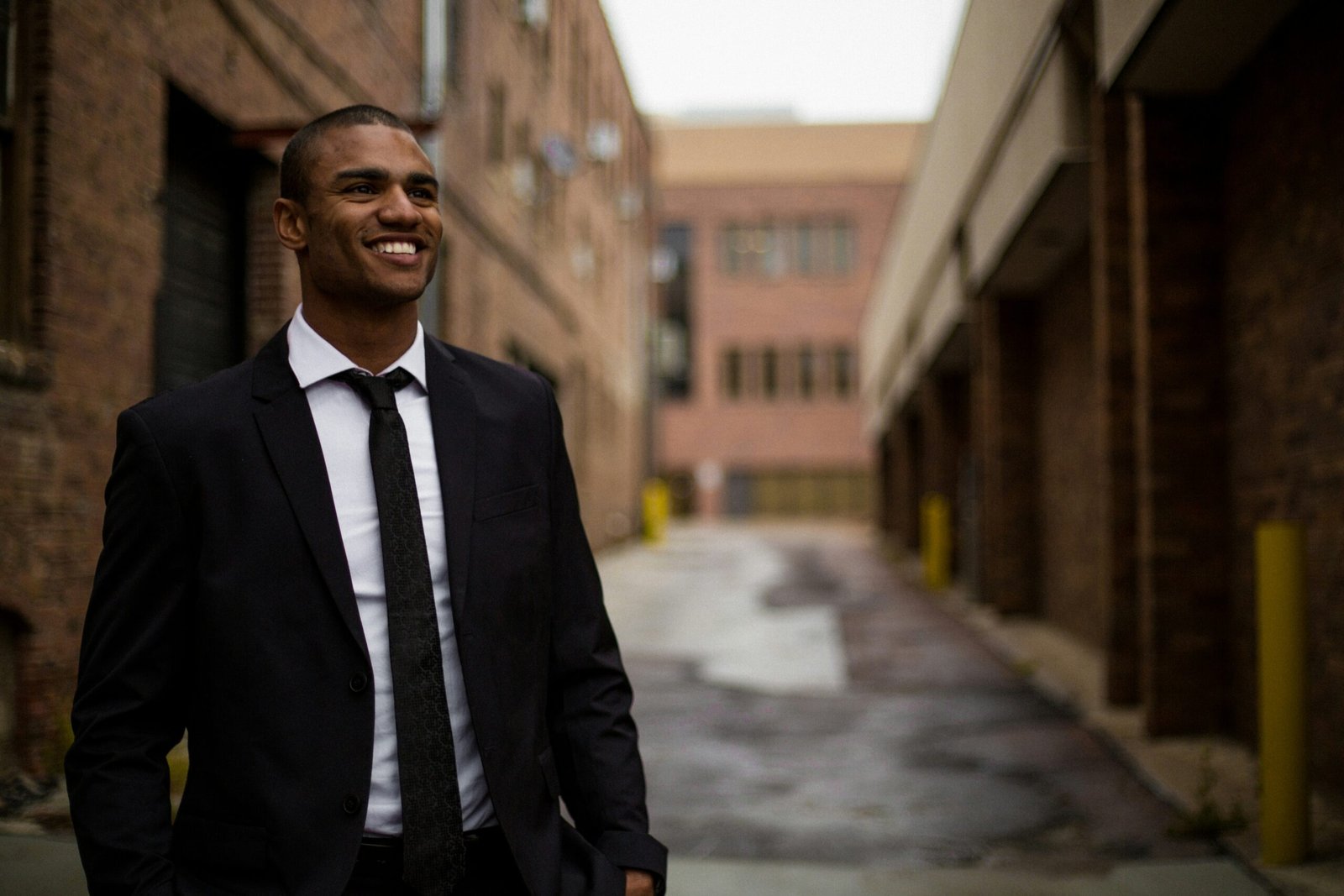If you’ve ever found yourself in need of a high-quality headshot but don’t have a professional camera on hand, fear not! Your trusty iPhone can do the job just as well. In this article, we’ll guide you through the process of taking headshots with your iPhone, revealing tips and tricks to ensure stunning results. From perfecting the lighting and composition to utilizing the portrait mode feature, you’ll soon be capturing professional-looking headshots that are bound to impress. So, grab your iPhone and get ready to unlock your inner photographer!

Understanding the Importance of Headshots
Introduction to headshots
Headshots play a crucial role in today’s professional world. Whether you are an actor, a freelancer, or a business professional, a well-crafted headshot can leave a lasting impression on potential clients or employers. It serves as a representation of your personality, professionalism, and overall brand. In this article, we will explore the benefits of having professional headshots and why using your iPhone can be a great tool for capturing these important images.
Benefits of having professional headshots
Having professional headshots can elevate your personal brand and open doors to new opportunities. First impressions are often based on appearance, and a high-quality headshot can create a positive and memorable first impression. It adds a level of professionalism and credibility to your online presence, making you stand out from the crowd. Professional headshots can also enhance your networking efforts, attract better job opportunities, and increase your chances of success in any industry. So, let’s dive into the world of headshots and discover how your iPhone can help you capture these impactful images.
Why use iPhone for headshots
The iPhone has revolutionized the way we capture and share photographs. With its advanced technology and powerful camera capabilities, your iPhone can create stunning headshots that rival those taken with expensive DSLR cameras. Not only is it convenient and readily available, but it also allows you to experiment freely, without the limitations of specialized equipment. The iPhone offers a range of customizable settings, user-friendly features, and access to various editing apps, making it an ideal tool for capturing and enhancing your headshots. In the following sections, we will guide you through the process of preparing your iPhone for headshot photography.
Preparing Your iPhone for Headshot Photography
Ensure your iPhone is updated and has enough storage
Before diving into headshot photography, it is essential to ensure that your iPhone is up to date and has enough storage space. Regularly updating your iPhone will ensure that you have access to the latest camera features and improvements. Additionally, headshot photography often involves capturing numerous images, and having sufficient storage will prevent any interruptions or the loss of valuable shots. By keeping your iPhone updated and decluttering unnecessary files, you can focus on capturing the perfect headshots without any worries.
Clean the camera lens
The camera lens of your iPhone is exposed to various elements such as dust, fingerprints, and smudges, which can affect the quality of your headshots. Cleaning the camera lens with a microfiber cloth or a lens cleaning solution will help ensure that your images come out crisp and clear. A clean lens allows more light to enter the camera, resulting in sharper and more professional-looking headshots. So, before each headshot session, don’t forget to give your iPhone’s camera lens a quick wipe to maintain optimum image quality.
Adjust camera settings for optimal results
To capture the best headshots with your iPhone, it is crucial to understand and adjust the camera settings accordingly. The iPhone camera app provides a range of options to customize your shots. Experimenting with these settings can help achieve different effects and enhance the overall quality of your headshots. Adjusting aspects such as exposure, white balance, and focus can significantly impact the final outcome of your images. Explore these settings and determine the ones that work best for your desired headshot style.

Lighting and Background Considerations
Choosing the right lighting
Proper lighting is the key to capturing impactful headshots. When using your iPhone for headshot photography, it is essential to consider the lighting conditions to achieve the best results. Soft, diffused lighting is often the most flattering and can help create a natural and professional look. Avoid harsh shadows or bright overhead lights that may create unflattering highlights or uneven lighting. Look for areas with ample natural lighting, such as near a window, or consider using artificial lighting setups, like ring lights, to control the lighting environment.
Natural vs artificial lighting
Both natural and artificial lighting have their advantages and can be used effectively for headshot photography. Natural lighting, especially during the golden hour (early morning or late afternoon), can provide a warm and soft glow that enhances the subject’s features. On the other hand, artificial lighting setups offer consistency and control over the lighting conditions, ensuring even illumination and minimal shadows. Experiment with different lighting techniques and find the one that suits your desired mood and style for the headshots you want to capture.
Setting up a suitable background
The background of your headshot can significantly impact the overall look and feel of the image. When shooting with your iPhone, you have the advantage of portability and flexibility in choosing backgrounds. Opt for a simple and uncluttered background that doesn’t distract from the main subject. A clean and neutral-colored wall, a solid-colored backdrop, or an outdoor setting with complementary elements can all serve as suitable backgrounds for headshots. Experiment with different options to find the one that enhances your subject and aligns with your personal brand or purpose.
Composition and Framing
Rule of thirds
The rule of thirds is a fundamental principle of photography composition, and it can be applied to headshot photography as well. It involves dividing the image into a grid of nine equal parts using two horizontal lines and two vertical lines. The points where these lines intersect are known as the “power points.” Positioning the subject’s eyes or face near one of these power points can create a visually pleasing and well-balanced composition. By utilizing the rule of thirds, you can give your headshots a professional and captivating look.
Finding the right angles
Capturing headshots involves experimenting with different angles to find the most flattering one for your subject. The angle at which you position yourself in relation to the subject can influence the appearance of facial features and overall proportions. Avoid shooting from below, as it can distort facial features and create an unflattering perspective. Instead, position yourself slightly above the subject’s eye level for a more natural and appealing look. Remember, experimenting with angles can help you discover unique perspectives that highlight the subject’s best features.
Framing the subject properly
When framing a headshot, it is important to ensure that the subject remains the central focus of the image. Placing the subject slightly off-center in the frame can add visual interest, while also creating a sense of balance and depth. Leaving some negative space around the subject can draw attention to their face and create a clean and uncluttered composition. Keep in mind that the framing of your headshots should align with the purpose or intended use of the images, whether it be for professional networking, acting auditions, or personal branding.

Posing Techniques for Headshots
Finding a comfortable and confident pose
Posing for headshots can be daunting for many individuals. To capture natural and engaging expressions, it’s essential to create a comfortable environment for your subject. Encourage them to relax and be themselves, as this will enable them to exude confidence and authenticity. Experiment with different poses, such as slight head tilts or shoulder adjustments, to capture a range of emotions and expressions. Remember to guide your subject throughout the process, making them feel at ease and helping them portray their best self.
Guiding the subject for natural expressions
A successful headshot is one that captures genuine emotions and expressions. As the photographer, it is your responsibility to guide your subject through the process and elicit natural expressions. Engage in conversation, crack jokes, or ask them to recall a happy memory. These techniques can help your subject relax and present their true self in front of the camera. Avoid forced smiles or overly posed stances, as they can appear unnatural and may not serve the purpose of the headshot.
Avoiding common posing mistakes
When capturing headshots, it’s important to be aware of common posing mistakes and how to avoid them. Common issues include tense shoulders, crossed arms, or a rigid posture that can create a closed-off or unapproachable appearance. Encourage your subject to keep their shoulders relaxed, their chin slightly raised, and their body posture open. Pay attention to details such as the position of hands and arms, as they can greatly influence the overall impression of the headshot. Providing gentle guidance and feedback can help your subject avoid these common mistakes and present themselves in the best possible way.
Focus and Depth of Field
Setting the focus accurately
Achieving proper focus is crucial for sharp and professional-looking headshots. With your iPhone, you can manually adjust the focus by tapping on the subject’s face or eyes on the screen. This allows you to ensure that the most important features are in sharp focus, drawing attention to the subject’s eyes, which are often considered the windows to the soul. Taking the time to set the focus accurately will result in headshots that showcase the subject’s unique features and capture their essence.
Adjusting depth of field for desired effect
Depth of field refers to the range of focus within an image. By adjusting the depth of field, you can control the degree of background blur, also known as bokeh, in your headshots. A shallow depth of field, achieved by having a wide aperture, can create a pleasing separation between the subject and the background. This technique helps draw attention to the subject while providing a dreamy and professional aesthetic. Experiment with different depth of field settings on your iPhone to achieve the desired effect for your headshots.
Using portrait mode effectively
If your iPhone model supports it, the portrait mode feature can be a powerful tool for capturing professional-looking headshots. Portrait mode utilizes the dual-camera system to create a simulated depth of field effect, blurring the background and placing the focus squarely on the subject. It automatically detects the subject’s face, making it a convenient option for achieving a shallow depth of field without having to manually adjust settings. Use portrait mode when appropriate, and consider experimenting with its various settings to achieve the desired look and feel for your headshots.
Utilizing iPhone Features and Apps
Utilizing portrait mode for professional-looking results
As mentioned before, portrait mode is a remarkable feature offered by many iPhone models to capture stunning headshots. By simulating depth of field and isolating the subject from the background, portrait mode creates a professional and polished look with minimal effort. Explore the different lighting options available within portrait mode, such as natural light, studio light, or contour light, to customize the appearance of your headshots further. Experiment with portrait mode in various settings, both indoors and outdoors, to maximize its capabilities and capture headshots that impress.
Using self-timer or remote control
Capturing headshots by yourself can be challenging, as it can be difficult to pose and take the photo simultaneously. However, your iPhone provides solutions to this problem. Utilize the self-timer feature or invest in a remote control that connects to your iPhone. This way, you can position yourself properly, achieve the desired composition, and capture the headshot at the perfect moment. Self-timer or remote control allows you to take multiple shots, providing you with a variety of options to choose from and ensuring you don’t miss the opportunity to capture a great headshot.
Exploring third-party camera apps for advanced features
While the built-in camera app on your iPhone provides a wide range of features and functions, you may also consider exploring third-party camera apps for more advanced capabilities. These apps offer additional tools such as manual controls, image stabilization, or advanced editing options. Research and experiment with different camera apps to find one that suits your preferences and helps you achieve your desired headshot style. However, be mindful of app reviews and ensure that they are reputable and compatible with your iPhone model before making a purchase.
Editing and Enhancing Headshots
Basic editing with built-in iPhone tools
Once you have captured your headshots, it’s time to enhance and refine them using the editing tools available on your iPhone. The built-in Photos app offers a range of basic editing options, including cropping, adjusting brightness and contrast, applying filters, and enhancing color saturation. Take advantage of these tools to fine-tune your headshots and bring out their full potential. Remember to strike a balance between enhancing your images and maintaining a natural look, as overly edited headshots may appear unrealistic or unprofessional.
Exploring photo editing apps for more advanced enhancements
If you desire more advanced editing capabilities, consider exploring various third-party photo editing apps available on the App Store. These apps offer a plethora of tools to enhance your headshots further, including selective adjustments, retouching options, creative filters, and advanced sharpening techniques. Experiment with different apps, keeping in mind the desired outcome and maintaining the authenticity of the headshot. It’s important to strike a balance between enhancing your images and preserving the natural qualities that make each headshot unique.
Retouching techniques for a natural and polished look
When it comes to retouching headshots, it’s crucial to strike the right balance to achieve a natural and polished look. Minor retouching techniques can help reduce blemishes, soften skin texture, and enhance facial features. However, it’s important to avoid excessive retouching, as it can create an unrealistic and unnatural appearance. Remember that the goal of headshots is to present an authentic representation of yourself or your subject. Retouch with caution, focusing on improving the image while maintaining the individual’s true essence.
Sharing and Showcasing Your Headshots
Choosing the best platform for sharing
Once you have captured and edited your headshots, it’s time to share them with the world. Choosing the right platform to showcase your headshots can significantly impact their reach and visibility. Consider the purpose of your headshots and your target audience when selecting a platform. For business professionals, LinkedIn can be an ideal platform to showcase your headshots and build a professional network. Actors and models may find success on platforms like Instagram or professional portfolio websites. Research different platforms and select the one(s) that align with your goals and target audience.
Preparing headshots for different platforms
Different platforms may have specific requirements and guidelines for sharing headshots. Before uploading your headshots, it’s important to ensure that they meet the size, resolution, and aspect ratio requirements of each platform. This will prevent any cropping or distortion issues, ensuring that your headshots are presented correctly and at their best quality. Take the time to resize or crop your headshots accordingly, and always double-check the guidelines of each platform to guarantee a consistent and professional presentation.
Promoting your work and building a portfolio
Sharing your headshots is just the first step in promoting your work and building a professional portfolio. Actively engage with your audience by responding to comments, connecting with other professionals in your field, and sharing valuable content related to your expertise. Use your headshots as a visual representation of the work you do or the services you offer. Consider creating a cohesive and visually appealing portfolio that showcases not only your headshots but also other relevant work or projects. Continuously update your portfolio with new headshots and share them regularly to maintain an active online presence.
Practice and Experimentation
Practicing with different subjects and environments
Achieving great headshots with your iPhone, just like any skill, requires practice and experimentation. Take the opportunity to practice with different subjects and environments to understand the nuances of capturing different individuals. Experiment with different lighting conditions, backgrounds, and compositions to broaden your abilities and develop your own style. By photographing a diverse range of subjects, you’ll gain invaluable experience in posing, guiding, and capturing natural expressions. Embrace each session as an opportunity to learn and improve your skills.
Experimenting with different settings and techniques
Your iPhone offers a multitude of settings and techniques that you can experiment with to enhance your headshot photography. Step out of your comfort zone and try different combinations of camera settings, lighting setups, or editing techniques to create unique and captivating headshots. Don’t be afraid to push the boundaries and explore unconventional approaches. Experimentation is the key to discovering new methods and refining your style as a headshot photographer.
Continuing to learn and improve over time
The world of photography, including headshot photography, is constantly evolving. As a passionate photographer, it is crucial to keep learning and improving your skills over time. Stay updated with the latest trends, techniques, and technology advancements in the industry. Attend workshops, enroll in online courses, and seek feedback from peers or professionals. Surround yourself with a community of fellow photographers who can provide support and inspire you on your journey. Remember, the learning process is ongoing, and your dedication to improvement will reflect in the quality of your headshots.
In conclusion, taking headshots with your iPhone can be an incredibly rewarding and accessible endeavor. By understanding the importance of headshots, preparing your iPhone, considering lighting and background, focusing on composition and framing, utilizing effective posing techniques, adjusting focus and depth of field, exploring iPhone features and apps, enhancing headshots through editing, sharing and showcasing headshots, and continually practicing and experimenting, you can capture professional-looking headshots that leave a lasting impression. So, grab your iPhone, follow the tips and techniques mentioned throughout this article, and start capturing headshots that truly represent your personal brand or the essence of your subjects.








